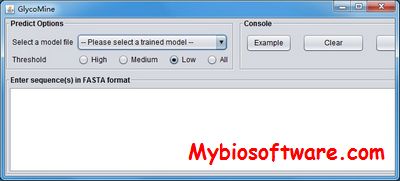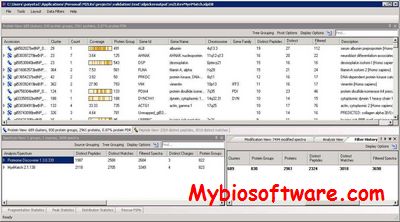GlycoMine
:: DESCRIPTION
GlycoMine is a machine learning-based approach for predicting N-, C- and O-linked glycosylation in the human proteome
::DEVELOPER
Jiangning Song, Ph.D.
:: SCREENSHOTS
:: REQUIREMENTS
- Linux/MacOsX/ Windows
- Java
:: DOWNLOAD
:: MORE INFORMATION
Citation:
GlycoMine: a machine learning-based approach for predicting N-, C- and O-linked glycosylation in the human proteome.
Li F, Li C, Wang M, Webb GI, Zhang Y, Whisstock JC, Song J.
Bioinformatics. 2015 Jan 6. pii: btu852.



 NO
NO